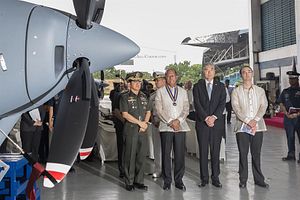Last Friday, the U.S. Embassy in Manila disclosed that the United States and the Philippines would be embarking on a new counterterrorism drill in mid-September. The drill is another indicator of the ongoing effort by the two treaty allies to continue boosting their defense cooperation in spite of challenges faced under the leadership of Rodrigo Duterte (See: “Why the Philippines’ Rodrigo Duterte Hates America”).
As I have noted before, despite all the focus on Duterte’s fierce anti-American rhetoric, the reality is that U.S.-Philippine defense ties has seen more of a downgrading than a full-blown severing (See: “Will Duterte End the US-Philippine Military Alliance?”).
Indeed, those who paying close attention to the relationship will note that in fact, in addition to some refocusing and renaming in terms of exercises, there have also been some new forms of cooperation advanced as well in response to ongoing challenges, be it in on maritime security amid transnational crimes in the Sulu-Sulawesi Seas or on counterterrorism following the Marawi crisis that erupted in May (See: “US Terror Aid to Philippines Signals Enduring Defense Ties Under Duterte”).
As further evidence to reinforce this point, on September 15, the U.S. Embassy in Manila publicly announced that the two governments would embark on a new bilateral, interagency counterterrorism drill called Tempest Wind in mid-September.
Tempest Wind, it said, had been approved by the Mutual Defense Board and Security Engagement Board (MDB-SEB) back in November 2016. That comes as no surprise. As I had indicated previously, the MDB-SEB meeting, which was held in late November at the General Headquarters of the Armed Forces of the Philippines (AFP) at Camp Emilio Aguinaldo in Quezon City, was where U.S. and Philippine defense officials had finalized changes to their exercises, some of which had been cut, downgraded, or refocused after a review by Duterte (See: “Where are US-Philippine Defense Relations Under Duterte?”).
The purpose of the whole-of-government drill, the Embassy said, was to “test and improve the ability of both nations to rapidly plan, coordinate, and conduct counterterrorism operations.” The drill will be augmented by additional military assessments, national level engagement, and subject matter expert exchanges taking place in both the Philippines and Hawaii, which is where the U.S. Pacific Command (PACOM) is located.
The combination of activities, the Embassy said, is designed to create a realistic environment to exercise counterterrorism strategy, focus future bilateral training efforts, enhance crisis response capabilities, and deepen the bilateral partnership.

































